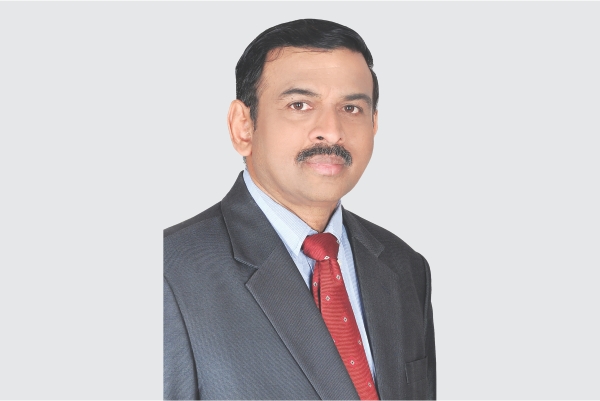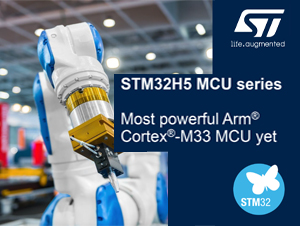K. Krishna Moorthy, Corporate Vice President & Managing Director, India Design Center Rambus Chip Technologies India Pvt. Ltd. and Chairman – IESA, has over three decades of experience in the electronics Industry, covering a wide spectrum of functions from Silicon design, System design, System engineering, and high performance IP design in deep sub micro processes. His professional areas of interest include deep sub-micron SoC and IC design including analog circuits, wireless communication and ultra-low power management designs. He responded to some of the burning issues raised by ELE Times that faced by transforming India today. Read the excerpts from the interview.
ELE Times: What are various business opportunities available for domestic and global companies partnering with the government agencies for internal security?
K. Krishna Moorthy: There are huge opportunities existing for the domestic and global companies in providing technology and which has remained untapped for several reasons. India’s institutions of governance are based on sector specific knowledge and management systems. However, the internal security solutions today are multi- disciplinary and very pervasive. It is for us to understand how these can be leveraged across different segments/functions by greater collaboration to successfully deliver multi-disciplinary solutions to different stake holders. The notion of national security also needs to be understood in a comprehensive sense rather than in narrow military terms. Internal security has multiple stakeholders and some of the major players are the Directorate of Revenue Intelligence (DRI), Customs and Central Excise, Railways, Ports, Airports, Space, Atomic Energy, Information Technology, Cyber, Telecom and Disaster management. These agencies cannot act as independent variables. Each impacts and is impacted in what happens in other segments. They also create considerable opportunities for participation by the corporate sector.
ELE Times: Shed light on manufacturing in the ESDM sector scaling up excellent job opportunities in addition to shoring up our forex reserves.
Krishna Moorthy: The manufacturing scenario has started to change in the recent years with so many new government initiatives to boost the development of the industry. Various policies and schemes have been announced by the government to boost the sector like Modified Special Incentive Package Scheme (M-SIPS) and Electronic Manufacturing Clusters (EMC). Moreover, with the extension of MSIPS, we are witnessing a surge in the manufacture of solar products, PV cells etc. ‘Make in India’ has put the nation on the global landscape and also, created a conducive environment for international and Indian companies to set a manufacturing unit in India. Today, the campaign is gathering momentum and is evident from the investment of companies like Foxconn, Opteimus, Lava, Micromax etc.
These opportunities not only boost the sector, but also creating huge job opportunities whether direct or indirect thereby reducing the negative effect of the outflow of foreign exchange. Specifically to A&D, establishing a military industrial complex, developing a manufacturing ecosystem for defence and aerospace, setting up joint ventures with global defence players will definitely see significant employment opportunities being created. The 30% offset for Defence contracts puts the onus on Prime contractors to source 30% of the value from India which is now beginning to kick start the eco system even in MSME space. However, these jobs also require specific skill sets – skills that require focused vocational training and specialization. These jobs also require industry-ready recruits who are ready to get started with minimal training. Making our students industry-ready calls for a major revamp of our present engineering curriculum too. IESA is focused on this aspect under the Skill India programme to exploit the job opportunities that will open up.
ELE Times: What is the status of public-private partnership accelerating the pace of indigenous defence production?
Krishna Moorthy: IESA has been actively involved in bringing private sector participate in significant defence production as well. Our mission is to bring together the value chain players, evolve common roadmap, represent policy needs to government, catalyze partnerships (academia/industry /startups), and provide a platform to focus attention. Over the years, the relationship between public-private partnerships have improved considerably and we can look forward to more successful partnerships in the recent future. One good example is our Space programme which has successfully developed a private industry eco system. So there is no reason why we cannot do this for Aerospace & Defence. IESA has also succeeded in developing a startup culture in this vertical as well.
ELE Times: How Importance is investment in R&D and what are the opportunities in Design and R&D?
Krishna Moorthy: R&D is the core of any innovation. This is where our traditional weakness was for a long time. The reluctance of R&D investment by private sector and the lack of ability of PSU’s to deliver on R&D investments in a time bound manner have hurt the nation a lot. It is an irony, that we as a nation are not focused on R&D investment when global majors are exploiting the talent base in India for their R&D work for developing top of the line products here. Without proper investment and resource in R&D, it is difficult to foresee the technologies waiting to be adopted and open for betterment through innovation. In IESA, we are propagating the concept of Innovation led Design and Design led manufacturing.
ELE Times: What are the ways to encourage participation and integrate innovative start-ups into the aerospace and defence ecosystem?
Krishna Moorthy: Many startups are already working in the Aerospace and Defence sector. Some are really in path breaking technologies. The main way to help them is to provide support interms of capital funding, as A&D sector is more capital intensive and requires higher initial capital when compared to other sectors. Other assistance is to encourage participation would be to provide access to technologies which are acquired from Prime contractors to help them develop next generation technologies so that the upgrades can happen going forward and access to incubation or prototyping facilities to move them to the next level.
ELE Times: Why DEFTRONICS 2016 will lay a huge focus on global partnerships for Make in India to happen?
Krishna Moorthy: IESA believes that to take the ESDM industry to the next level, India needs Joint Ventures in order to be at par with the global innovation trends, and these can only be achieved through global collaborations and technology transfers. For Deftronics 2016, IESA has collaborated with NASSCOM to take the event to the next level, which is scheduled this August (4 – 5) at The Ritz-Carlton, Bangalore. Global majors are expected to participate and seek out the opportunities in the Indian A&D space. We hope it surpasses all our and your expectations and continue to make strides in our vision of converting India into an ESDM manufacturing hub. This year it is expected to be the biggest Deftronics ever with expected 800+ attendees consisting of representatives from central and state government, C-Level Executives, professors, technicians, entrepreneurs and venture capitalists. Deftronics provides a great opportunity to interact with various key representatives of respective companies at a single platform and create business networking. We expect many country delegations to be here for the event which should kick start many JV’s and investment agreements.
ELE Times: The government is about to come out with first Defence electronics policy with the help of IESA and NASSCOM. When it is likely to be announced?
Krishna Moorthy: The Defence Electronics policy is presently with the higher level Government officials for final review and approval and we can soon expect the announcement of the same.
ELE Times: What does it take to lead an organization? What are the challenges before you as Chairman of IESA? What plans do you have for remaining and the next year for IESA?
Krishna Moorthy: It is privilege to lead this organisation when the all of India is getting galvanized with the flurry of new initiatives by the Government. The most exciting things are happening in the Startup space, manufacturing and also component level, R&D and manufacturing. That they are all at Green shoot level now, but that is where the challenge is. Identifying the micro level road blocks to convert intent to action is the first challenge. Fortunately we have a government at the center who are ever willing to listen and receive suggestions. The state governments are vying with each other for investments and rolling out incentives. There cannot be a better time to head IESA. I hope IESA will spread wings to international locations to have desks in 2 or 3 countries in this year. There are plans in advanced stages.











